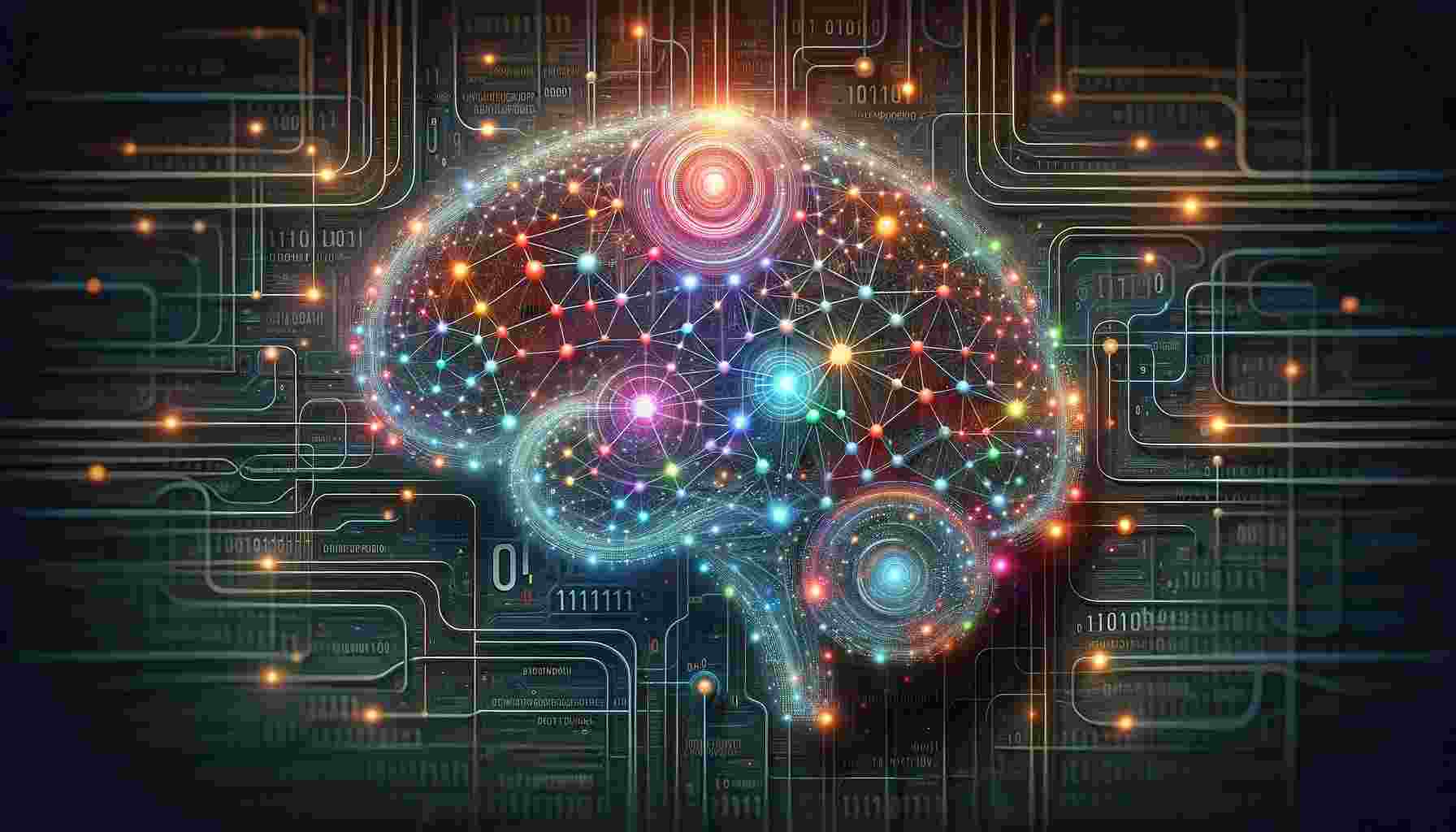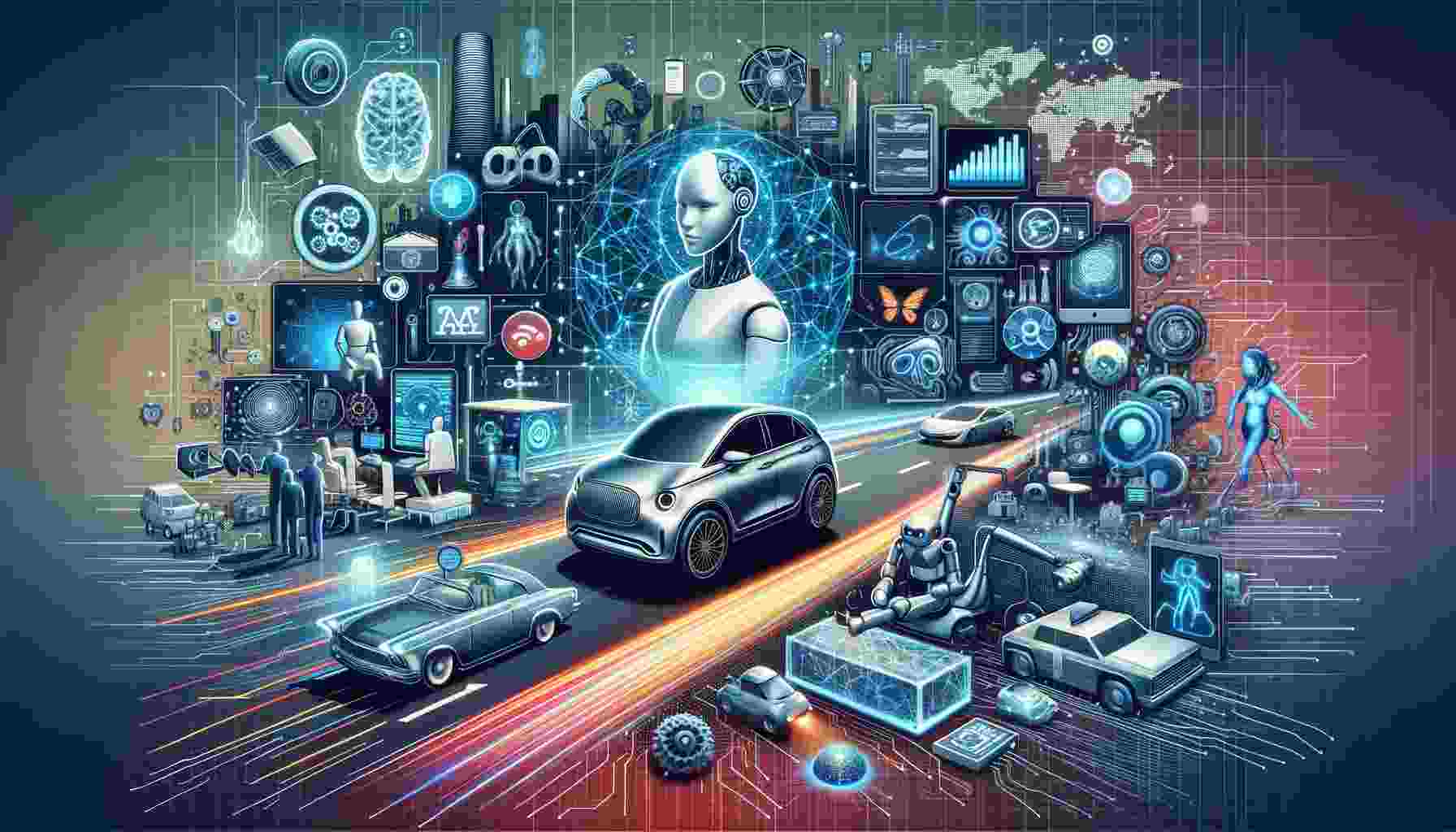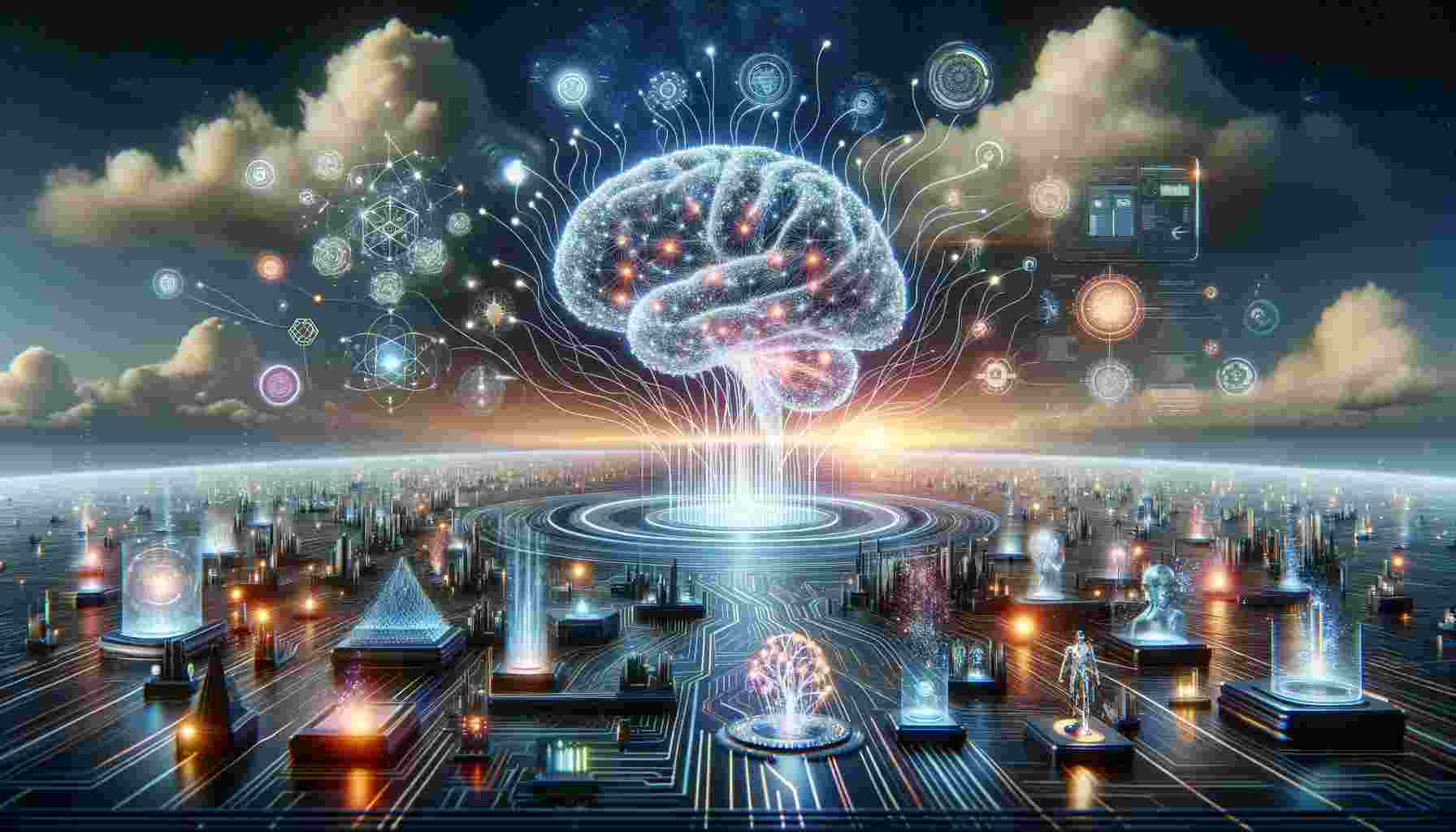In artificial intelligence (AI), a model is essentially a framework or a system designed to interpret and learn from data, simulating a level of human-like understanding and decision-making. These models, rooted in complex mathematical theories and computational algorithms, are foundational to the functioning of AI.
To learn more about models in AI and their impact, read this article written by the AI specialists at All About AI.
How Do AI Models Work?
The operation of AI models can be likened to the learning process of a human being but at a more advanced and faster scale. The models undergo several key stages:

Modeling:
The first step involves selecting the appropriate algorithm or framework. This decision is crucial as it sets the tone for how the AI system will process information. Different problems require different models – for instance, a neural network might be ideal for image recognition, while a decision tree might better suit a classification problem.
AI Model Training:
In this phase, the model is exposed to data – lots of it. Here, it learns to identify patterns, make connections, and essentially ‘understand’ the data. The training is guided by algorithms which adjust the model’s parameters to maximize its accuracy and efficiency in task performance.
Inference:
After training, the model uses its newly acquired knowledge to make predictions or decisions when faced with new, unseen data. This is the practical application of the model, where it demonstrates its value in real-world tasks, from speech recognition to predictive analytics.
Types of AI Models
The landscape of AI models is diverse, each suited to specific kinds of tasks or data.
Supervised Machine Learning:
These models, akin to a student learning under the guidance of a teacher, are trained on labeled datasets. They are highly effective in scenarios where past data can predict future outcomes, such as in risk assessment models in finance.
Unsupervised Machine Learning:
Unsupervised learning models work with unlabeled data. They are exploratory in nature, identifying hidden patterns or intrinsic structures in the data. They’re particularly useful in segmenting customers in marketing or identifying novel scientific phenomena in large datasets.
Semi-Supervised Machine Learning:
These models blend the best of supervised and unsupervised learning. They are particularly advantageous in situations where acquiring labeled data is costly or time-consuming, allowing for more flexibility and efficiency in the learning process.
Common AI Models
Numerous AI models have become fundamental due to their adaptability and effectiveness.
Deep Neural Networks:
Resembling the human brain’s architecture, deep neural networks consist of multiple layers that process aspects of the data in a hierarchical manner. This structure allows them to tackle tasks of high complexity, such as interpreting human speech or recognizing objects in a cluttered scene.
Linear Regression:
A basic yet powerful model, linear regression is used to predict a continuous outcome, such as house prices or stock values, based on one or more predictor variables. It’s favored for its simplicity and clarity in scenarios where relationships between variables are linear.
Logistic Regression:
This model is a staple in classification tasks. It predicts the probability of occurrence of an event by fitting data to a logistic curve, useful in scenarios like email filtering or disease diagnosis.
Decision Trees:
These models are visual and intuitive, using a tree-like model of decisions and their possible consequences. They’re widely employed in strategic decision-making, risk assessment, and diagnostic algorithms.
Random Forest:
Random forests are an ensemble of decision trees, designed to improve prediction accuracy and control overfitting. They are versatile, being used in both classification (like identifying loan defaulters) and regression (like predicting house prices) problems.
Applications of AI Models
AI models are revolutionizing various industries with their wide range of applications.

Natural Language Processing (NLP):
These models enable computers to understand, interpret, and respond to human language in a useful way. They are behind technologies like automated translation services, content summarization tools, and sentiment analysis in customer feedback.
Computer Vision:
AI models in computer vision allow machines to interpret and understand the visual world. Applications range from medical imaging, where they help in diagnosing diseases, to retail, where they enable automated checkout systems.
Speech Recognition:
Transforming spoken language into a machine-readable format, speech recognition models are the cornerstone of voice-activated assistants, dictation software, and customer service chatbots.
Autonomous Vehicles:
AI models in autonomous vehicles interpret sensor data to make real-time decisions, enabling safe and efficient autonomous driving.
Use Cases of AI Models
The practical applications of AI models are vast and varied, significantly impacting various sectors.
Recommendation Systems in E-commerce
These systems enhance user experience by providing personalized product recommendations, thus driving sales and improving customer engagement.
Chatbots for Customer Service
AI-powered chatbots offer quick, efficient customer service, handling routine inquiries and freeing up human agents for more complex issues.
Human Resources: Talent Acquisition and Management
In HR, AI models assist in sifting through applications to identify suitable candidates, and aid in managing employee performance and development.
Challenges in AI Model Development
Developing AI models comes with significant challenges. Here are some of those being tackled by experts in the field.
Ensuring Accuracy and Avoiding Overfitting:
One of the primary challenges in AI model development is ensuring the accuracy of the model while avoiding overfitting. Overfitting occurs when a model is too closely tailored to the training data, making it unable to perform well on new, unseen data. This challenge necessitates a balance between the model’s complexity and its ability to generalize from training data to real-world scenarios.
Managing Biases in AI Models:
Bias in AI models is a significant concern, as these biases can lead to unfair or unethical outcomes. Biases can arise from the data used to train the models or from the design of the algorithms themselves. Identifying and mitigating these biases is crucial to developing fair and ethical AI systems.
Maintaining Transparency and Interpretability:
As AI models become more complex, particularly with the rise of deep learning, their decisions become less transparent and harder to interpret. This ‘black box’ nature of AI poses a challenge in critical applications where understanding the model’s decision-making process is essential, such as in healthcare or legal applications.
Addressing Ethical Concerns and Privacy:
The development of AI models raises ethical concerns, including issues of privacy, autonomy, and the potential misuse of AI technologies. Ensuring that AI models respect user privacy and ethical guidelines is vital to maintaining public trust in AI systems.
Future Trends in AI Model Development
The future of AI model development is marked by exciting trends. Here’s what we have to look forward to.

Advancements in Quantum Computing:
Quantum computing is poised to revolutionize AI model development by offering exponential increases in processing power. This advancement could enable the handling of incredibly complex datasets and the solving of problems currently beyond the reach of traditional computing.
Growth of Edge AI:
Edge AI refers to AI models that are processed locally on a device, rather than relying on cloud-based systems. This trend is expected to grow, enhancing the speed and efficiency of AI applications and reducing reliance on central servers, which is crucial for applications like autonomous vehicles and IoT devices.
Federated Learning and Enhanced Privacy:
Federated learning is an emerging trend where AI models are trained across multiple decentralized devices or servers while keeping the data localized. This approach enhances user privacy and data security, reducing the risks associated with central data storage and processing.
Integration of AI with IoT (Internet of Things):
The integration of AI with IoT devices is a trend that’s likely to expand. AI models can analyze data from IoT devices in real-time, leading to smarter and more efficient systems in homes, industries, and cities.
Want to Read More? Explore These AI Glossaries!
Venture into the exciting field of AI with our well-chosen glossaries. For every learning level, there’s always something novel to encounter!
-
- What is Computer Automated Design?: Computer Automated Design (CAD) is a digital technology that enables engineers, architects, and designers to create, modify, and optimize detailed 2D and 3D models of objects and structures with precision and efficiency.
- What is Concept Drift?: Concept drift refers to the phenomenon where the statistical properties of data used to train a machine learning model change over time, leading to a decrease in the model’s performance.
- What is Connectionism?: Connectionism seeks to explain how complex cognitive processes arise from the interactions of these simpler elements, making it a cornerstone concept in modern artificial intelligence (AI).
- What Is a Consistent Heuristic?: It is a heuristic function that never overestimates the cost to reach the goal and satisfies the triangle inequality.
- What Is the Constrained Conditional Model?: It is an advanced predictive model that applies constraints to ensure specific conditions are met.
FAQs
What is meant by a model in AI?
What is a model in machine learning?
What is the role of data in training AI models?
What are some examples of AI models in everyday life?
Conclusion
AI models represent a groundbreaking shift in technology and society. They offer immense opportunities for innovation and problem-solving across industries, reshaping how we interact with technology and each other.
This article was written to answer the question, “what is a model,” discuss models in the context of AI. If you’re looking to learn more about other concepts and key terms in AI, read the rest of the articles in our AI Definitions Guide.





